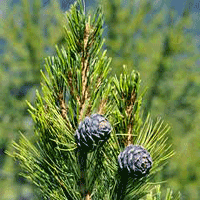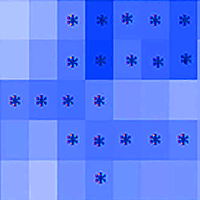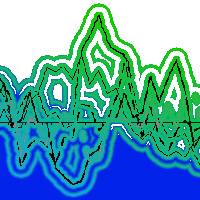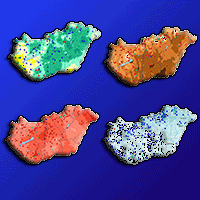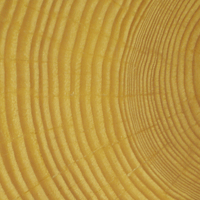Oak forests play a major role in Britain due to their economic, social and historic value. Sudden oak death and general decline symptoms have therefore caused major concerns in the forestry sector over the past decade. Several strategies have been proposed to preserve the economic and social value of oak forests, including the planting of native species with more southerly origins, or non-native species of oak that may be better suited to the projected climate of the future. The Ovington research plots, established 50 years ago at the Bedgebury Pinetum in southeast England, provided the opportunity to compare annual growth rates and climate-growth relationships of five oak species growing adjacent to each other on the same soil type and under the same climatic conditions. Clear differences were evident in annual increment and climate-growth responses for the five Quercus species. Growth rates were significantly lower (p<0.05) for the two species native to the UK (Q. petraea and Q. robur) compared to the southern European and American species. A partitioning analysis using key climatic variables separates Q. coccinea from the other species due to its negative response to low temperatures. These results were confirmed by pointer year analysis. The analysis suggests that Q. robur is likely to be the more resilient of the two native species of oak to the future climate of southern Britain. Of the non-native species of oak evaluated, Q. coccinea represents an alternative species to Q. robur and Q. petraea on very dry, nutrient-poor sites. Q. palustris may also have some potential under current conditions for species diversification, but its requirement for higher summer precipitation than the other four species suggests that this potential may not be sustained as climate change progresses. However, if alternative species are selected as more resilient to climate change in terms of growth, it will be essential to consider a range of other issues including impacts on biodiversity, resilience to endemic tree pests and diseases, form and appearance, landscape and timber quality.
Keywords
, , ,
Citation
Sanders TGM, Pitman R, Broadmeadow MSJ (2014). Species-specific climate response of oaks (Quercus spp.) under identical environmental conditions. iForest 7: 61-69. - doi: 10.3832/ifor0911-007
Academic Editor
Marco Borghetti
Paper history
Received: Nov 20, 2012
Accepted: Oct 17, 2013
First online: Nov 18, 2013
Publication Date: Apr 02, 2014
Publication Time: 1.07 months
© SISEF - The Italian Society of Silviculture and Forest Ecology 2014
Open Access
This article is distributed under the terms of the Creative Commons Attribution-Non Commercial 4.0 International (https://creativecommons.org/licenses/by-nc/4.0/), which permits unrestricted use, distribution, and reproduction in any medium, provided you give appropriate credit to the original author(s) and the source, provide a link to the Creative Commons license, and indicate if changes were made.

Breakdown by View Type
(Waiting for server response...)
Article Usage
Total Article Views: 58417
(from publication date up to now)
Breakdown by View Type
HTML Page Views: 47701
Abstract Page Views: 3896
PDF Downloads: 5062
Citation/Reference Downloads: 58
XML Downloads: 1700
Web Metrics
Days since publication: 4413
Overall contacts: 58417
Avg. contacts per week: 92.66
Article Citations
Article citations are based on data periodically collected from the Clarivate Web of Science web site
(last update: Mar 2025)
Total number of cites (since 2014): 21
Average cites per year: 1.62
Publication Metrics
by Dimensions ©
Articles citing this article
List of the papers citing this article based on CrossRef Cited-by.
(1)
Abrams MD (1990)Adaptations and responses to drought in species of North America. Tree Physiology 7: 227-238.
CrossRef |
Gscholar
(2)
Abrams M (1996)Distribution, historical development and ecophysiological attributes of oak species in the eastern United States. Annales des Sciences Forestières 53 (2-3): 487-512.
CrossRef |
Gscholar
(3)
Allen CD, Macalady AK, Chenchouni H, Bachelet D, McDowell N, Vennetier M, Kitzberger T, Rigling A, Breshears DD, Hogg EH, Gonzalez P, Fensham R, Zhang Z, Castro J, Demidova N, J-Lim H, Allard G, Running SW, Semerci A, Cobb N (2010)A global overview of drought and heat-induced tree mortality reveals emerging climate change risks for forests. Forest Ecology and Management 259: 660-684.
CrossRef |
Gscholar
(4)
Anderson RC, Adams D (1978)Species replacement patterns in central Illinois white oak forests. In: “Central Hardwood Forest Conference II”. Department of Forestry and Natural Resources, Purdue University, West Lafayette, IN, USA, pp. 284-301.
Gscholar
(5)
Andersson M, Milberg P, Bergman K-O (2011)Low pre-death growth rates of oak (
Quercus robur L.). Is oak death a long-term process induced by dry years? Annals of Forest Science 68: 159-168.
CrossRef |
Gscholar
(6)
Arend M, Kuster T, Günthardt-Goerg MS, Dobbertin M (2011)Provenance-specific growth responses to drought and air warming in three European oak species (
Quercus robur, Q. petraea and
Q. pubescens). Tree Physiology 31: 287-297.
CrossRef |
Gscholar
(7)
Attorre F, Francesconi F, Scarnati L, De Sanctis M, Alfò M, Bruno F (2008)Predicting the effect of climate change on tree species abundance and distribution at a regional scale. iForest 1: 132-139.
CrossRef |
Gscholar
(8)
Beck W (2007)Finding best regression approach for description of climate-growth relationships by floating time spans of varying width. In: Proceedings of the “DENDROSYMPOSIUM 2006”. Tervuren (Belgium) 20-22 Apr 2006. Scientific Technical Report STR07/03, Potsdam, Germany.
Gscholar
(9)
Beck W, Heussner K-U (2011)Tree sensitivity sign of senescense. In: Proceedings of the “DENDROSYMPOSIUM 2011” (Gärtner H, Rozenberg P, Montès P, Bertel O, Heinrich I, Helle G eds). Orléans (France) 11-14 May 2011. Scientific Technical Report STR11/03, Helmoltz Gemeinschaft, Potsdam, Germany.
Gscholar
(10)
Beck W, Sanders TG, Pofahl U (2013)CLIMTREG: Detecting temporal changes in climate-growth reactions - A computer program using intra-annual daily and yearly moving time intervals of variable width. Dendrochronologia 31 (3): 232-241.
CrossRef |
Gscholar
(11)
Bolte A, Ammer C, Löf M, Madsen P, Nabuurs G-J, Schall P, Spathelf P, Rock J (2009)Adaptive forest management in central Europe: climate change impacts, strategies and integrative concept. Scandinavian Journal of Forest Research 24: 473-482.
CrossRef |
Gscholar
(12)
Brasier C (1996)Phytophthora cinnamomi and oak decline in southern Europe. Environmental constraints including climate change. Annales des Sciences Forestières 53 (2-3): 347-358.
CrossRef |
Gscholar
(13)
Brasier CM, Scott JK (1994)European oak declines and global warming: a theoretical assessment with special reference to the activity of
Phytophthora cinnamomi. EPPO Bulletin 24: 221-232.
CrossRef |
Gscholar
(14)
Broadmeadow MSJ, Jackson SB (2000)Growth responses of
Quercus petraea, Fraxinus excelsior and
Pinus sylvestris to elevated carbon dioxide, ozone and water supply. New Phytologist 146: 437-451.
CrossRef |
Gscholar
(15)
Broadmeadow MSJ, Ray D, Samuel CJA (2005)Climate change and the future for broadleaved tree species in Britain. Forestry 78: 145-161.
CrossRef |
Gscholar
(16)
Bunn AG (2008)A dendrochronology program library in R (dpIR). Elsevier, Jena, Germany.
Gscholar
(17)
Carrer M (2011)Individualistic and time-varying tree-ring growth to climate sensitivity. PLoS ONE 6 (7): e22813.
CrossRef |
Gscholar
(18)
Chatziphilippidis G, Spyroglou G (2004)Sustainable management of coppice forests in Greece. In: “Towards the Sustainable Use of Europe’s Forests - Forest Ecosystem and Landscape Research: Scientific Challenges and Opportunities” (Andersson F, Birot Y, Paivinen R eds). EFI Proceedings 49, Joensuu, Finland, pp. 51-60.
Online |
Gscholar
(19)
Cook ER, Johnson AH, Blasing TJ (1987)Forest decline: modeling the effect of climate in tree rings. Tree Physiology 3: 27-40.
CrossRef |
Gscholar
(20)
Cullen LE, Palmer JG, Duncan RP, Stewart GH (2001)Climate change and tree-ring relationships of
Nothofagus menziesii tree-line forests. Canadian Journal of Forest Research 31: 1981-1991.
Gscholar
(21)
Danek M, Klusek M, Krapiec M (2007)The oak chronology (948-1314 AD) for the Zary area (SW Poland). Geochronometria 26: 47-52.
CrossRef |
Gscholar
(22)
Di Filippo A, Alessandrini A, Biondi F, Blasi S, Portoghesi L, Piovesan G (2010)Climate change and oak growth decline: dendroecology and stand productivity of a Turkey oak (
Quercus cerris L.) old stored coppice in central Italy. Annals of Forest Science 67: 706-706.
CrossRef |
Gscholar
(23)
Douglass AE (1928)Climatic cycles and tree growth: a study of the annual rings of trees in relation to climate and solar activity, Carnegie Inst., Washington Publ., Washington, DC, USA.
Gscholar
(24)
Dreyer E (1994)Water stress, xylem dysfunctions and dieback mechanisms in European oak trees. INRA Nancy, Champenoux, France.
Gscholar
(25)
Dwyer JP, Cutter BE, Wetteroff JJ (1995)A dendrochronological study of black and scarlet oak decline in the Missouri Ozarks. Forest Ecology and Management 75: 69-75.
CrossRef |
Gscholar
(26)
Eilmann B, Weber P, Rigling A, Eckstein D (2006)Growth reactions of
Pinus sylvestris L. and
Quercus pubescens Willd. to drought years at a xeric site in Valais, Switzerland. Dendrochronologia 23: 121-132.
CrossRef |
Gscholar
(27)
Evans J (1984)Silviculture of broadleaved woodland. Forestry Commission Bulletin 62, HMSO, London, UK, pp. 232.
Gscholar
(28)
Fahrmeir L, Tutz G (1994)Multivariate statistical modeling based on generalized linear models Springer-Verlag, New York, USA, pp. 548.
Gscholar
(29)
Franklin RS (2013)Growth response of the alpine shrub,
Linanthus pungens, to snowpack and temperature at a rock glacier site in the eastern Sierra Nevada of California, USA. Quaternary International 310: 20-33.
CrossRef |
Gscholar
(30)
Friedrichs DA, Büntgen U, Frank DC, Esper J, Neuwirth B, Loeffler J (2009)Complex climate controls on 20 century oak growth in central-west Germany. Tree Physiology 29: 39-51.
CrossRef |
Gscholar
(31)
Gibbs JN, Greig BJW (1997)Biotic and abiotic factors affecting the dying back of pedunculate oak
Quercus robur L. Forestry 70: 399-406.
CrossRef |
Gscholar
(32)
Grant M, Edwards M (2008)Conserving idealized landscapes: past history, public perception and future management in the New Forest (UK). Vegetation History and Archaeobotany 17: 551-562.
CrossRef |
Gscholar
(33)
Griggs C, De Gaetano A, Kuniholm P, Newton M (2007)A regional high-frequency reconstruction of May-June precipitation in the north Aegean from oak tree rings, A.D. 1089-1989. International Journal of Climatology 27: 1075-1089.
CrossRef |
Gscholar
(34)
Helama S, Läänelaid A, Raisio J, Tuomenvirta H (2009)Oak decline in Helsinki portrayed by tree-rings, climate and soil data. Plant and Soil 319: 163-174.
CrossRef |
Gscholar
(35)
Hendry SJ, Poole EJ, Craig I, Proudfoot JC (2005)Forest Condition 2004. Information Note FCIN075, Forestry Commission, Edinburgh, UK.
Online |
Gscholar
(36)
Howard PJA, Howard DM (1984)Effects of trees on soil properties, a resampling of J.D. Ovington’s plots at Bedgebury. Merlewood research and development paper no. 101, Institut of Terrestrial Ecology, Grange-over-Sands, Merlewood Research Station, pp. 14.
Gscholar
(37)
Hu B, Simon J, Kuster TM, Arend M, Siegwolf R, Rennenberg H (2013)Nitrogen partitioning in oak leaves depends on species, provenance, climate conditions and soil type. Plant Biology 15: 198-209.
CrossRef |
Gscholar
(38)
Innes JL (1990)Assessment of tree condition. HMSO, London, UK.
Gscholar
(39)
Jenkins MA, Pallardy SG (1995)The influence of drought on red oak group species growth and mortality in the Missouri Ozarks. Canadian Journal of Forest Research 25: 1119-1127.
CrossRef |
Gscholar
(40)
Kuster TM, Arend M, Bleuler P, Günthardt-Goerg MS, Schulin R (2013)Water regime and growth of young oak stands subjected to air-warming and drought on two different forest soils in a model ecosystem experiment. Plant Biology 15: 138-147.
CrossRef |
Gscholar
(41)
Leavitt SW (2002)Prospects for reconstruction of seasonal environment from tree-ring δ
13C: baseline findings from the Great Lakes area, USA. Chemical Geology 192: 47-58.
CrossRef |
Gscholar
(42)
Leblanc DC, Foster JR (1992)Predicting effects of global warming on growth and mortality of upland oak species in the Midwestern United States - a physiologically based dendroecological approach. Canadian Journal of Forest Research 22: 1739-1752.
CrossRef |
Gscholar
(43)
Leuzinger S, Zotz G, Asshoff R, Körner C (2005)Responses of deciduous forest trees to severe drought in Central Europe. Tree Physiology 25: 641-650.
CrossRef |
Gscholar
(44)
Mérian P, Lebourgeois F (2011)Size-mediated climate-growth relationships in temperate forests: a multi-species analysis. Forest Ecology and Management 261: 1382-1391.
CrossRef |
Gscholar
(45)
Mérian P, Bontemps J-D, Bergès L, Lebourgeois F (2011)Spatial variation and temporal instability in climate-growth relationships of sessile oak (
Quercus petraea [Matt.] Liebl. ) under temperate conditions. Plant Ecology 212: 1855-1871.
CrossRef |
Gscholar
(46)
Minckler LS (1965)Pin oak (
Quercus palustris Muenchh.). In: “Silvics of forest trees of the United States” (Fowells HA ed). USDA Forest Service, Washington, DC, USA, pp. 762.
Gscholar
(47)
Mitchell AF, Westall AW (1972)Bedgebury pinetum and forest plots. HMSO, London, UK.
Gscholar
(48)
Morecroft MD, Bealey CE, Howells O, Rennie S, Woiwod IP (2002)Effects of drought on contrasting insect and plant species in the UK in the mid-1990s. Global Ecology and Biogeography 11: 7-22.
CrossRef |
Gscholar
(49)
Oberhuber W, Stumböck M, Kofler W (1998)Climate-tree-growth relationships of Scots pine stands (
Pinus sylvestris L.) exposed to soil dryness. Trees 13: 19-27.
CrossRef |
Gscholar
(50)
Ovington JD (1953)Studies of the development of woodland conditions under different trees: I. Soils pH. Journal of Ecology 41: 13-34.
CrossRef |
Gscholar
(51)
Ovington JD (1956)Studies of the development of woodland conditions under different trees. IV. The ignition loss, water, carbon and nitrogen content of the mineral soil. Journal of Ecology 44: 171-179.
CrossRef |
Gscholar
(52)
Ovington JD, Madgwick HAI (1958)The Sodium, Potassium and Phosphorus contents of tree species grown in close stands. New Phytologist 57: 273-284.
CrossRef |
Gscholar
(53)
Pilcher JR, Baillie MG (1980)Six modern oak chronologies from Ireland. Tree-Ring Bulletin 40: 11.
Gscholar
(54)
Ray D, Morison J, Broadmeadow MS (2010)Climate change: impacts and adaptation in England’s woodlands. Research Note FCRN 201, Forestry Commission, Edinburgh, UK, pp. 16.
Online |
Gscholar
(55)
R Core Team (2012)R: a language and environment for statistical computing. R Foundation for Statistical Computing, Vienna, Austria.
Gscholar
(56)
Robertson PA (1992)Factors affecting tree growth on three lowland sites in southern Illinois. American Midland Naturalist 128: 218-236.
CrossRef |
Gscholar
(57)
Rozas V (2005)Dendrochronology of pedunculate oak (
Quercus robur L. ) in an old-growth pollarded woodland in northern Spain: tree-ring growth responses to climate. Annals of Forest Sciences 62: 209-218.
CrossRef |
Gscholar
(58)
Sanders T, Pitman R, Broadmeadow M (2012)Soil type modifies climate-growth response of beech in Southern Britain. In: Proceedings of the “DENDROSYMPOSIUM 2011” (Gärtner H, Rozenberg P, Montès P, Bertel O, Heinrich I, Helle G eds). Orléans (France) 11-14 May 2011. Scientific Technical Report STR11/03, Helmoltz Gemeinschaft, Potsdam, Germany.
Gscholar
(59)
Scharnweber T, Manthey M, Criegee C, Bauwe A, Schröder C, Wilmking M (2011)Drought matters - declining precipitation influences growth of L. and L. in north-eastern Germany. Forest Ecology and Management 262: 947-961.
CrossRef |
Gscholar
(60)
Schweingruber FH (1988)Tree rings: basics and applications of dendrochronology. Kluwer Academic Publishers, Dordrecht, The Netherlands, pp. 288.
Gscholar
(61)
Schweingruber FH (1990)Dendroecological information in pointer years and abrupt growth changes. In: “Methods of Dendrochronology, applications in the Environmental Sciences” (Cook ER, Kairiuštis L eds). Kluwer, Dordrecht, The Netherlands, pp. 227-283.
Gscholar
(62)
Speer JH, Grissino-Mayer HD, Orvis KH, Greenberg CH (2009)Climate response of five oak species in the eastern deciduous forest of the southern Appalachian Mountains, USA. Canadian Journal of Forest Research 39: 507-518.
CrossRef |
Gscholar
(63)
Spyroglou G, Chatziphilippidis G (2007)The growth simulator “Drymos” as a challenge for modelling sweet chestnut. Bulgarian Academy of Sciences, Sofia, Bulgaria, pp. 97-110.
Gscholar
(64)
Stokes MA, Smiley TL (1968)An introduction to tree-ring dating. University of Arizona Press, Tucson, AZ, USA, pp. 73.
Gscholar
(65)
Sturrock RN, Frankel SJ, Brown AV, Hennon PE, Kliejunas JT, Lewis KJ, Worrall JJ, Woods AJ (2011)Climate change and forest diseases. Plant Pathology 60: 133-149.
CrossRef |
Gscholar
(66)
Tardif J, Brisson J, Bergeron Y (2001)Dendroclimatic analysis of , and from an old-growth forest, southwestern Quebec. Canadian Journal of Forest Research 31: 1491-1501.
CrossRef |
Gscholar
(67)
Thomas F, Blank R (1996)The effect of excess nitrogen and of insect defoliation on the frost hardiness of bark tissue of adult oaks. Annales des Sciences Forestières 53 (2-3): 395-406.
CrossRef |
Gscholar
(68)
Thomas FM, Blank R, Hartmann G (2002)Abiotic and biotic factors and their interactions as causes of oak decline in Central Europe. Forest Pathology 32: 277-307.
CrossRef |
Gscholar
(69)
Wigley TML, Briffa KR, Jones PD (1984)On the average value of correlated time series, with applications in dendroclimatology and hydrometeorology. Journal of Climate and Applied Meteorology 23: 201-213.
CrossRef |
Gscholar
(70)
Wilson SM, Broadmeadow M, Sanders TG, Pitman R (2008)Effect of summer drought on the increment of beech trees in southern England. Quarterly Journal of Forestry 102: 9.
Gscholar


